Complete Solutions to Short Answer Question of chapter WORK, ENERGY AND POWER of Class 11 book with complete answers and questions
| Class 11 | PHYSICS |
| Chapter | WORK, ENERGY AND POWER |
| PRADEEP | Short Answer Question |
| Number Of Questions | 52 |
| Academic Year | 2023-24 |
Does the work done in raising a body through a certain height depend upon how fast it is raised ?
View SolutionIn a tug of war, one team is giving way to other. What work is being done and by whom?
View SolutionWhat sort of energy is associated with a bird flying in air ?
View SolutionMomentum of a body is doubled. By what percent does its KE change?
View SolutionWhen a spring is compressed or stretched, what happens to its potential energy?
View SolutionOut of kilowatt hour and electron volt, which is bigger unit of energy and by what factor?
View SolutionWork done in moving a body over a closed loop in zer'. Is this statement true for all forces?
View SolutionA rocket explodes in mid air. What happens to its total momentum and total KE?
View SolutionA particle is moving in a circular path of given radius with number of rotations per second (i) constant (ii) decreasing (iii) increasing.
What happens to work done in the three cases?
View SolutionCan you associate potential energy with a non conservative force ?
View SolutionA spark is produced when two stones strike against each other. Why?
View SolutionIn an exothermic chemical reaction, is mass being converted into energy?
View SolutionA hydrogen bomb is more powerful than an atom bomb. Why?
View SolutionA constant power P is applied on a particle of mass m. find kinetic energy, velocity and displacement of particle as function of time t.
View SolutionA shot fired from a cannon explodes in air. What will be the changes in the momentum and the kinetic energy?
View SolutionExplain with reason whether the potential energy in the following cases increases or decreases:
(a) a spring is compressed,
(b) a spring is stretched,
(c) two dissimilar charges brought near each other,
(d) a body is taken away agains the gravitational force.
View SolutionTwo springs have force constants `K_(1)` and `K_(2)` , where `K_(1)gtK_(2)`. On which spring, more work is downe if
(i) they are stretched by the same force?
(ii) they are stretched by the same amount?
View SolutionA amn rowing a boat upstream is at rest with respect to shore. (a) Is he doing any work ? (b) If he stope rowing and moves down with the stream, is any work being done on him ?
View SolutionA pump motor is used to deliver water at a certain rate from a given pipe. To obtain 'n' times water from the same pipe in the same time by what amount (a) the force and (b) power of the motor should be increased ?
View SolutionA spring is compressed by tieing its ends together tightly. It is then placed in acid and dissolves. What happens to its stored potential energy.
View Solution(a) Two masses one n times heavier than the other are dropped from same height. How do their momentum compare just before they hit the ground ?
(b) Two masses one n times heavy as the other heave equal knetic energy. How do their momentum compare ?
View Solution(a) Can kinetic energy of a system be changed without changing its momentum ?
(b) Can momentum of a system be changed without changing its kinetic energy?
View SolutionA meteorite burns in the atmosphere before it reaches the earth ' s surface . What happens to its momentum ?
View SolutionCan a body have momentum without energy?
View SolutionCan a body have energy without having momentum ?
View SolutionMomentum of a particle is increased by `50%`. By how much percentage kinetic energy of particle will increase?
View SolutionCan a body have momentum when its energy is negative?
View SolutionThe potential energy function for a particle executing simple harmonic motion is given by `V(x)=(1)/(2)kx^(2)`, where k is the force constant of the oscillatore. For `k=(1)/(2)Nm^(-1)`, show that a particle of total energy 1 joule moving under this potential must turn back when it reaches `x=+-2m.`
View SolutionA stone is dropped from the top of a high tower. Will the mechanical energy of the stone be conserbed or not if the force of friction due to air is not neglected ?
View SolutionFigure shows two smooth inclined planes with different inclinations. Two blocks of same mass are allowed to slide down the two planes from the top A. Which block will arrive on the ground with greater velocity?
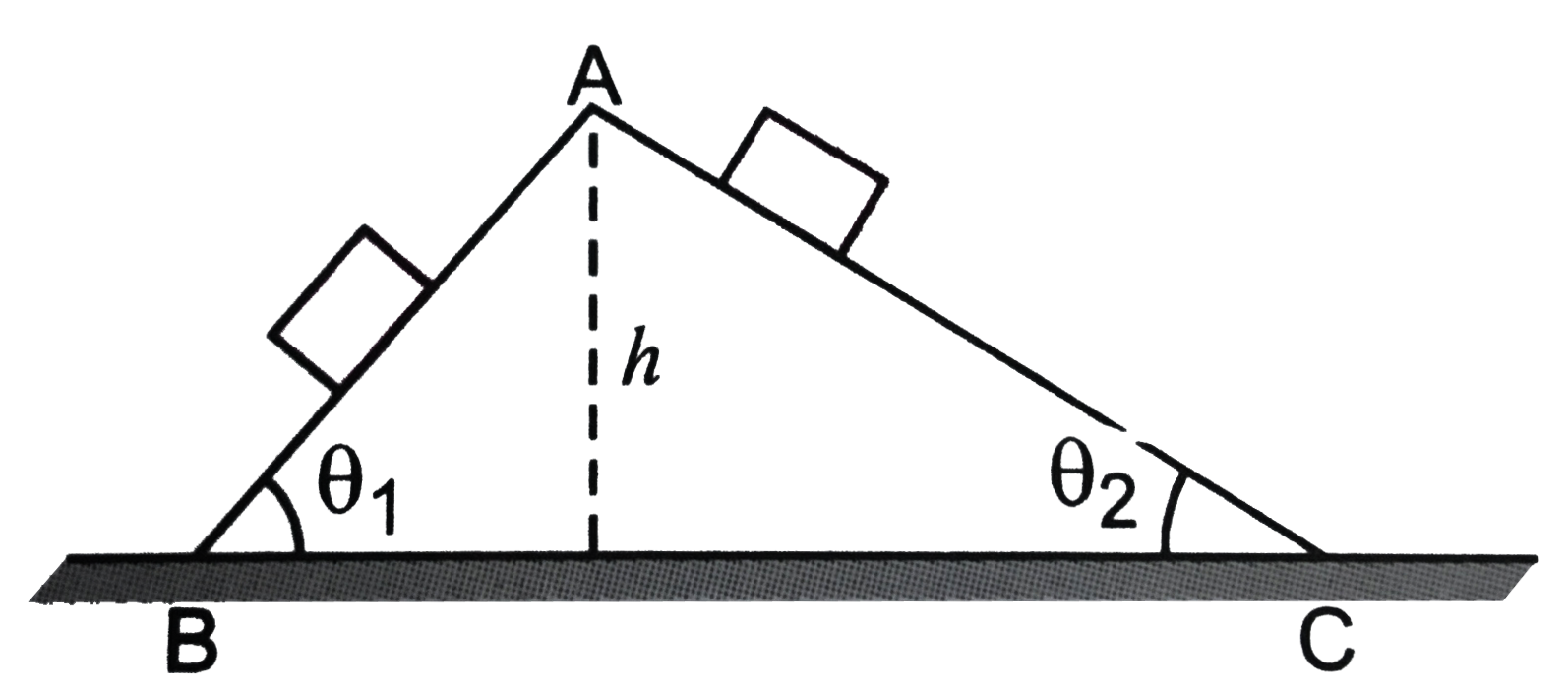
View SolutionA man can jump higher on moon than on earth. With same effort, can a runner improve his timing for 100m race on moon as compared to that on earth?
View SolutionA force F is related to the position of a particle by the relation `F=(10x^(2))N` . Find the work done by the force when the particle moves from `x=2m to x=4m`.
View SolutionA bullet of mass 0.01J kg and travelling at a speed of `500m//s` strikes a block of mass 2 kg which is suspended by a string of length 5m. The cnetre of gravity of the block is found to rise a vertical distance of 0.1m, figure. What is the speed of the bullet after it emerges from the block ? `(g=9.8m//s^(2)).`
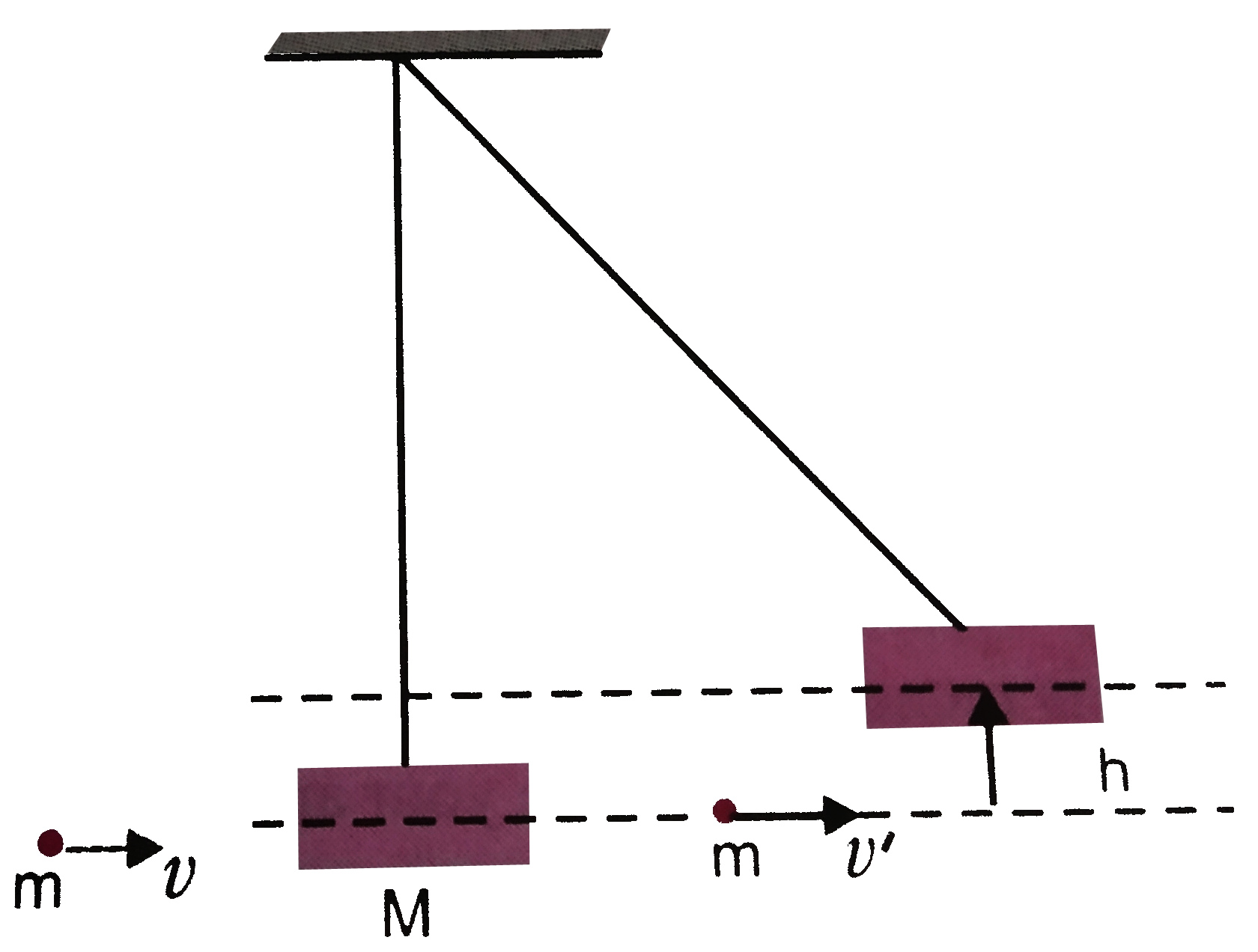
View SolutionIn any perfectly inelastic collision, is whole of KE lost ?
View SolutionThrowinig mud on a wall is an example of perfectly inelastic collision. Comment.
View SolutionWhat is meant by zero work ? State the conditions under which a force does no work. Give any one example.
View SolutionTwo bodies of unequal masses have same linear momentum. Which one has greater K.E. ?
View SolutionTow bodies of unequal masses have same K.E. Which one has greater linear momentum?
View SolutionHow do potential energy and K.E. of a spring vary with displacement ? Is this variation different from variation in potential energy and K.E. of a body in free fall ?
View SolutionWhat is meant by mass energy equivalence ? Discuss its significance in Physics.
View SolutionHydrogenic materials are used as moderators in nuclear reactors to slow doen the neutrons. Why ?
View SolutionHow do you justify energy conservation from the vibrations of a simple pendulum ?
View SolutionA graph of potential energy `V(x)` verses x is shown in figure. A particle of energy `E_(0)` is executing motion in it. Draw graph of velocity and kinetic energy versus x for one complete cycle AFA.
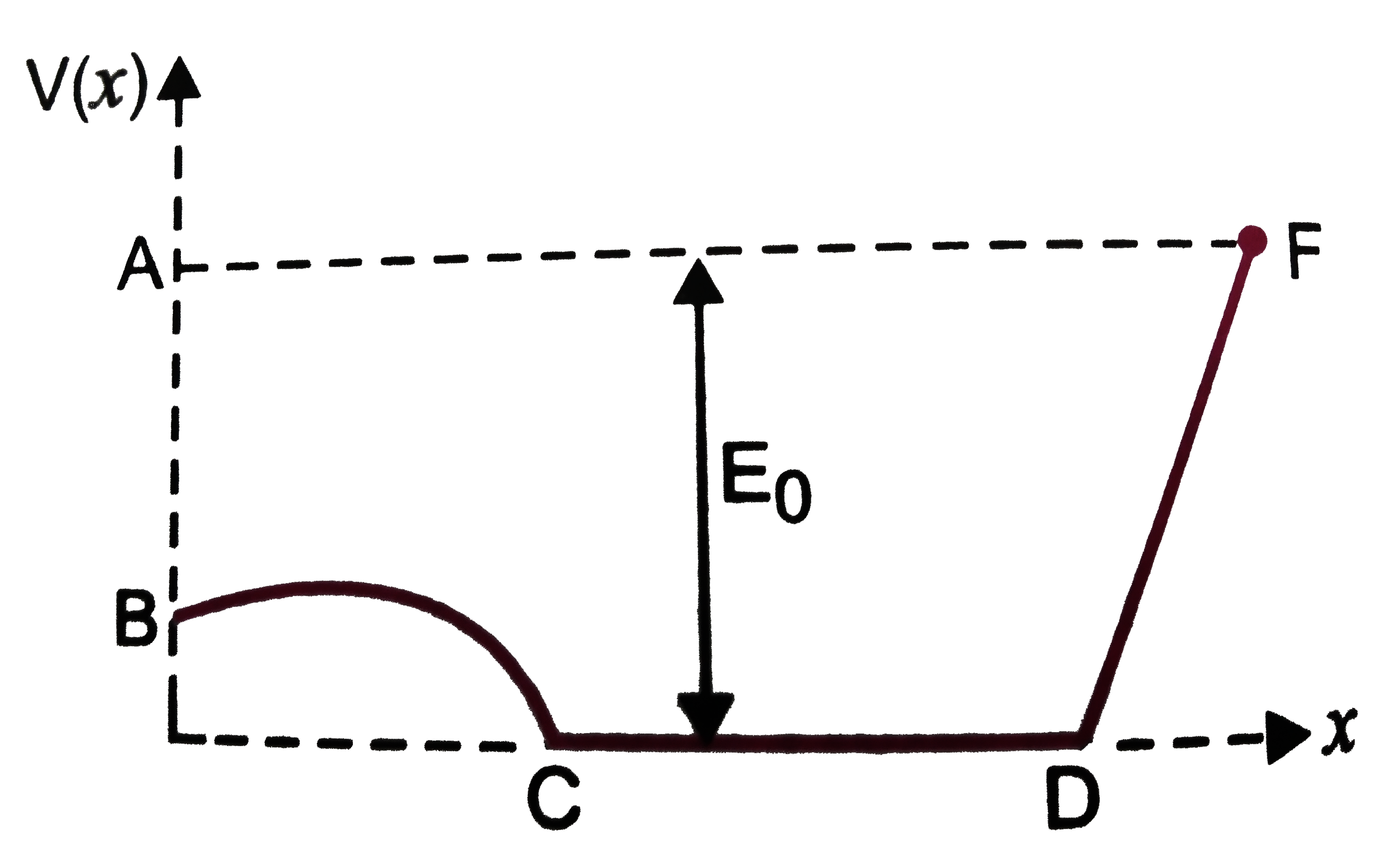
View SolutionA ball of mass m`m`, moving with a speed `2upsilon_(0)`, collides inelasticaly `(egt0)` with an identical ball at rest. Show that `(a)` For head - on collision, both the balls move forward.
(b) For a genergcollision, the angle between the two velocities of scattered balls is less that `90^(@)`.
View SolutionConsider a one-dimensional motion of a particle with total energy E. There are four regions A, B, C and D is which the relation between potential energy U, kinetic energy (K) and total energy E is as given below
RegionA: `UgtE` Region B: `UltE`
Region C: `KltE` Region D: `UgtE`
State with reason in each case whether a particle can be found in the given region or not.
View SolutionThe bob A of a pendulum released from horizontal to the vertical hits another bob B of the same mass at rest on a table as shown in figure.
If the length of the pendulum is 1m, calculate
(a) the height to which bob `A` will rise after collision.
(b) the speed with which bob `B` starts moving.
Neglect the size of the bobs and assume the collision to be elastic.
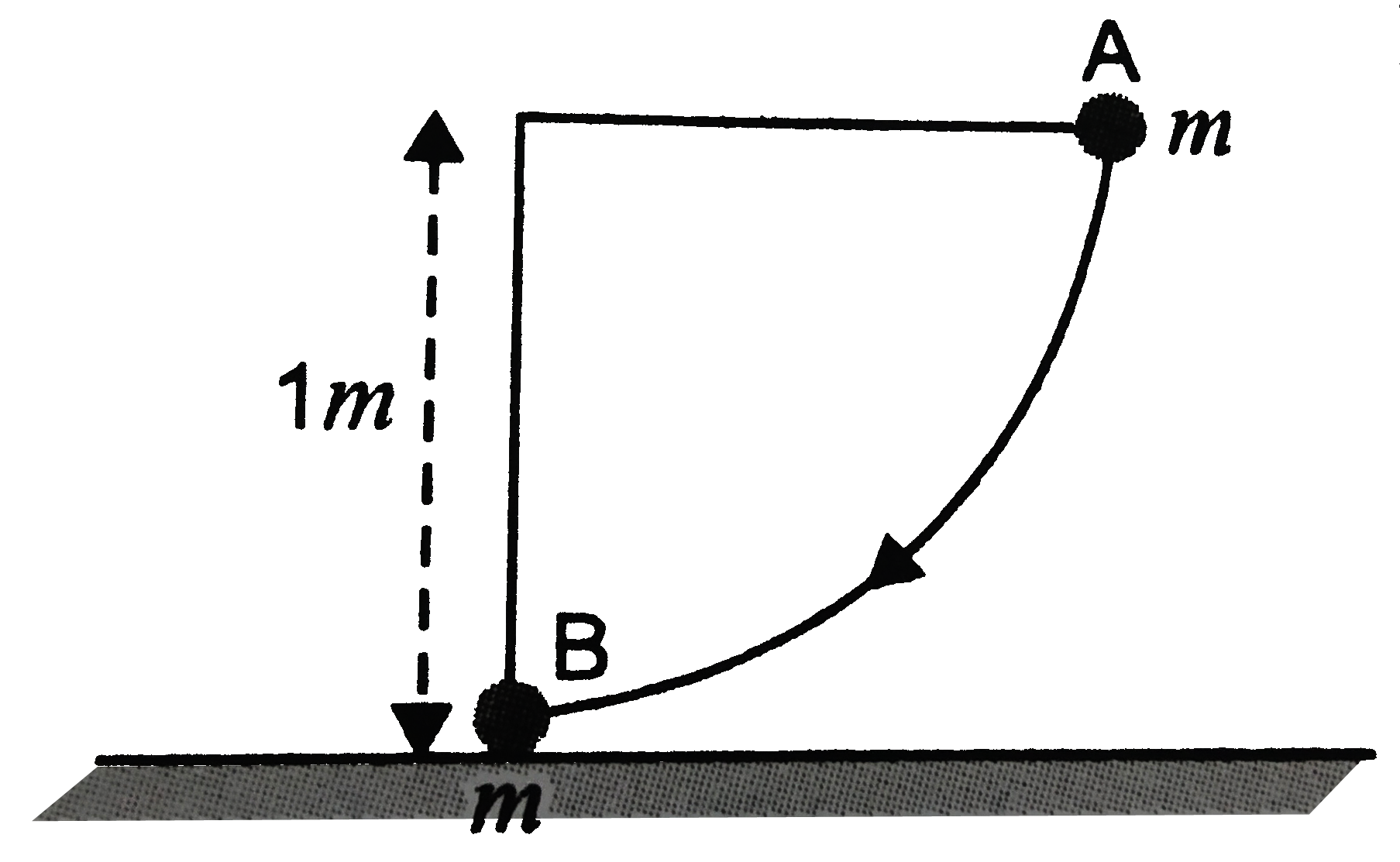
View SolutionA raindrop of mass `1g` falling from a height of `1km` hits is the ground with a speed of `50 ms^(-1)`. Which of the following statements is correct? `("Taking" g= 10ms^(-2))`.
View SolutionTwo pendulums with identical bobs and lengths are suspended from a common support such that in rest position, the two bobs are in constact, . One of the bobs is released after being displaced by `10^(@)` so that it collides elastically head - on with the other bob.
(a) Describe the motion of two bobs.
(b) Draw a graph showing variation in energy of either pendulum with time,for `0letle2T` , where `T` is the period of each pendulum.
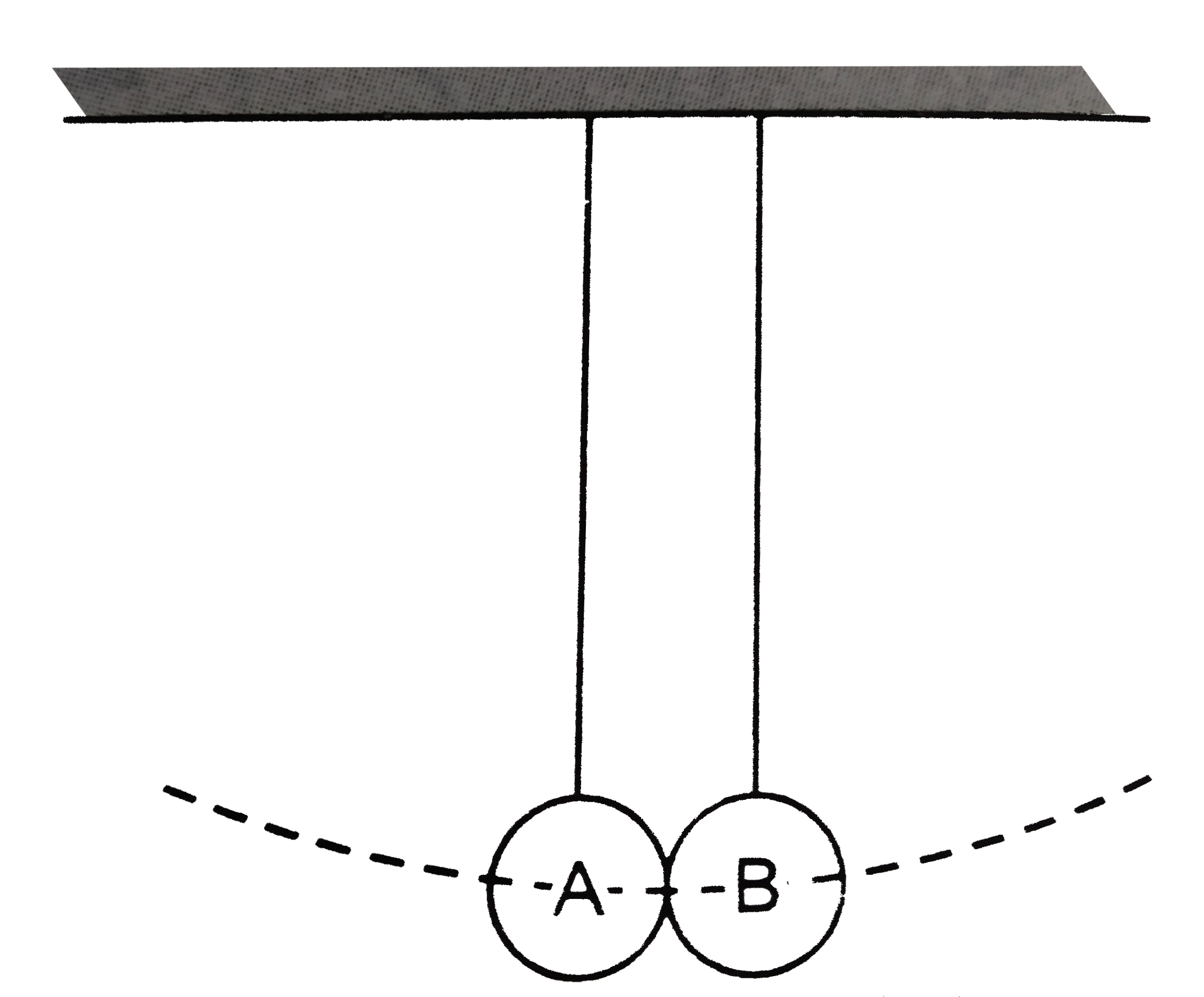
View SolutionSuppose the average mass of raindrops is `3.0xx10^(-5)kg` and their average terminal velocity `9ms^(-1)`. Calculate the energy transferred by rain to each square metre of the surface at the place which receives 100 cm of rain in a year.
View SolutionAn engine is attahed to a wagon through a shock absorber of length 1.5m. The system with a total mass of 50,000kg is moving with a speed of `36kmh^(-1)` when the brakes are applied to bring it to rest. In the process of the system being brought to rest, the spring of the shock absorber gets compressed by `1.0m`. If `90%` of energy of the wagon is lost due to friction, calculate the spring constant.
View SolutionAn adult weighing 600N raises the centre of gravity of his body by 0.25m while taking each step of 1m lenth in jogging. If he jogs for 6km, calculate the energy utilised by him in jogging assuming that there is no energy loss dur to friction of ground and air. Assuming that the body of the adult is capable of converting `10%` of energy intake in the form of food, calculate the energy equivalent fo food that would be required to compensate energy utilised for jogging.
View SolutionOn complete combustion , a litre of petrol gives off heat equivalent to `3xx10^(7)J` . In a test drive, a car weighing 1200kg, including the mass of driver, runs 15kg per litre while moving with a uniform speed on a straight track. Assuming that friction offered by the road surface and air to be uniform, calculate the force of friction acting on the car during the test drive. If the efficiency of the car engine were `0.5.
View Solution
Short Answer Question questions and complete solutions for chapter WORK, ENERGY AND POWER of PRADEEP PHYSICS (HINGLISH) of Class 11
All Exercises from PRADEEP Class 11 PHYSICS WORK, ENERGY AND POWER
- Additional Exercises
- Advanced Problems For Competitions
- Assertion-Reason Type Questions
- Comprehension
- Conceptual Problems
- Curiosity questions
- Fill in the blanks
- higher order thinking skills
- Integer Type Questions
- JEE (Main and Advanced)
- Long Answer Question
- Multiple choice question
- NCERT EXERCISES WITH SOLUTIONS
- NCERT( Multiple choide questions-1)
- Problems For Practice
- SAMPLE PROBLEM
- Short Answer Question
- solved examples
- value Based Question
- Very Short Anwer Question.